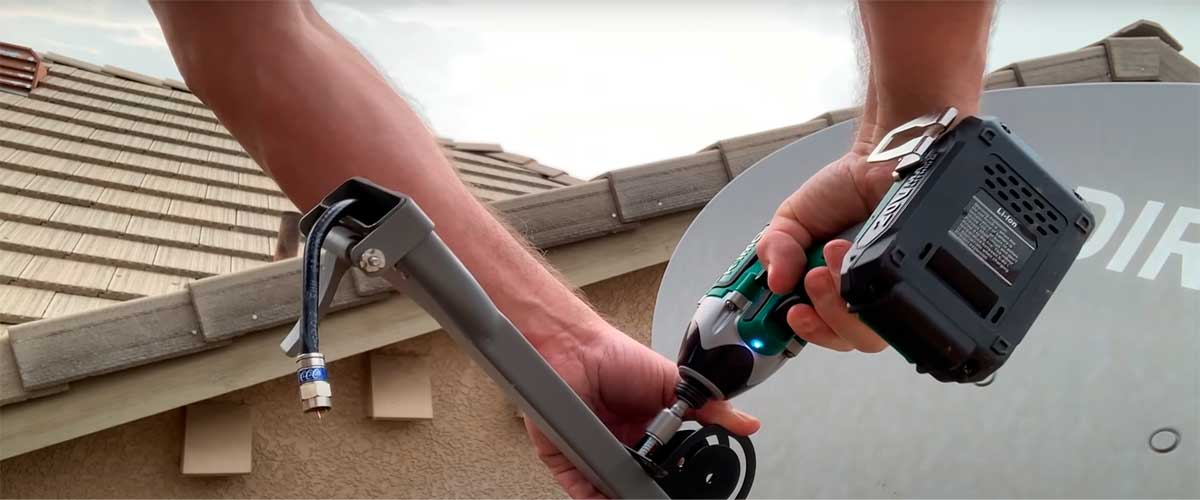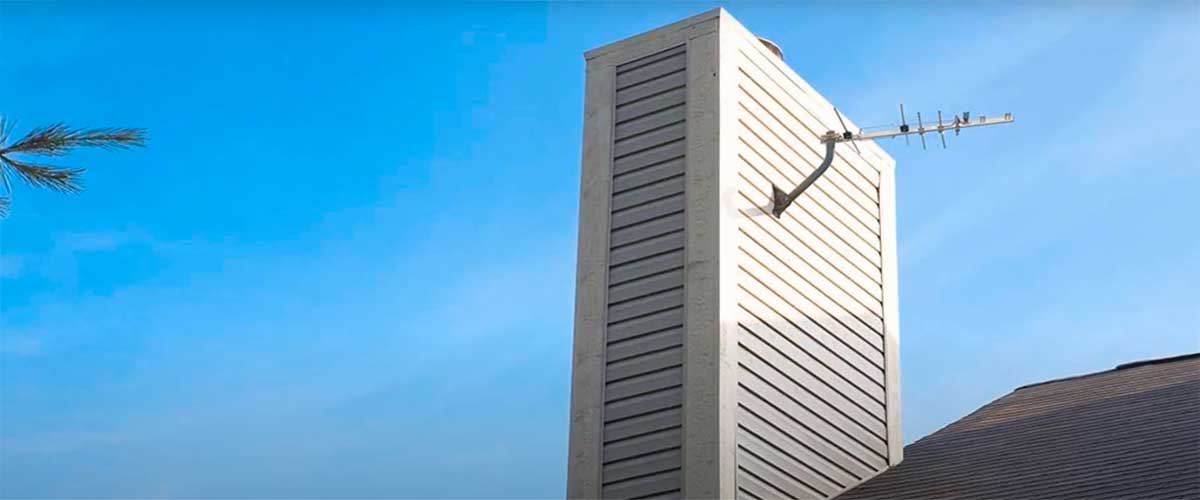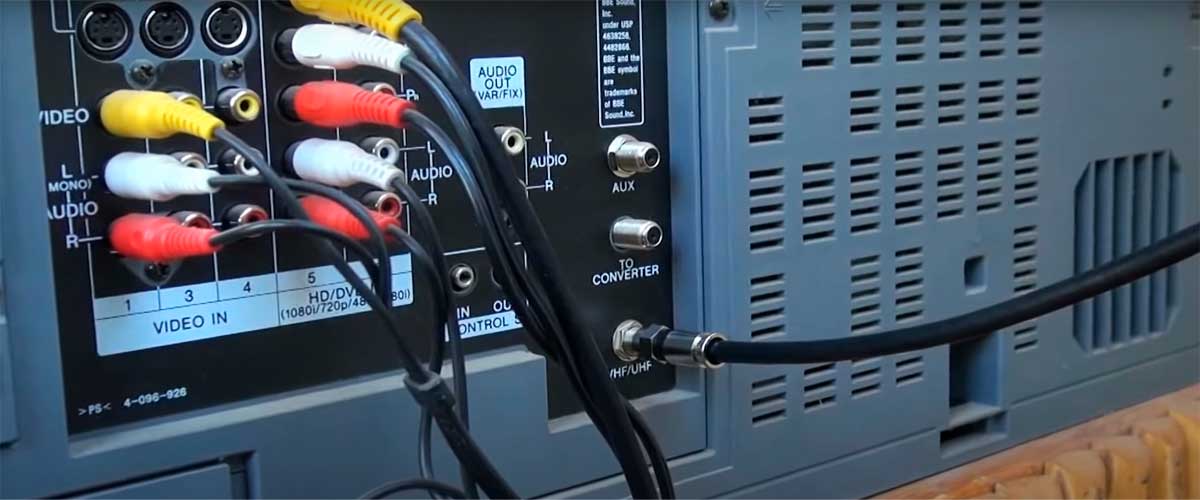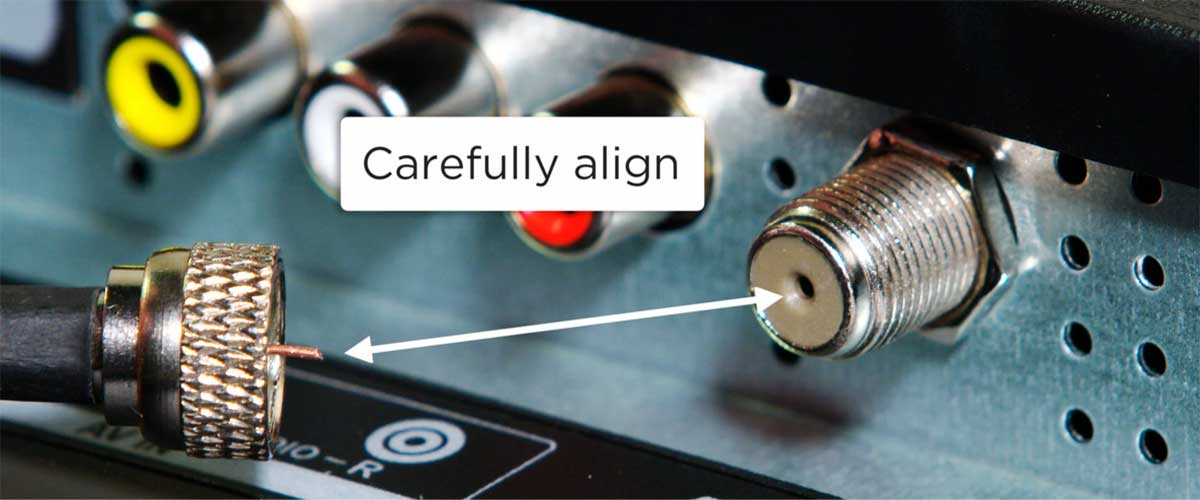When you’re looking for the best place to put your outdoor TV antenna, there are a lot of factors to consider. You need to find an area that gets good reception and is free from obstructions.
If you’re not sure where to start, don’t worry! We’ve put together this epic guide to help you out. In this article, we’ll discuss common questions about outdoor antennas. By the end of this article, you’ll know exactly where to put your antenna for maximum reception!
Antenna perception range
Each antenna has a reception range that you’ll find in the product description. The range will give you an idea of how close or how far the antenna needs to be from the broadcast towers. If your house is too far away from the towers, you may need to invest in a long-range outdoor TV antenna.
To find out where the broadcast towers are in relation to your home, you can use a site like TVFool.com. Once you input your address, it will show you a list of nearby towers and their distance from your home.
You’ll also want to take into account any obstacles that might be between your house and the broadcast towers. If there are trees, buildings, or hills in the way, they can weaken the signal. In that case, you may need to put the antenna higher up on your roof for a better chance of receiving a strong signal.
If you’re still having trouble getting a good reception after trying a few different locations, you might need to consider an amplified outdoor TV antenna. An amplifier can boost the signal, making it easier for your TV to pick up the channels you want.

Installation of your antenna
You don’t need a lot of fancy tools or parts to install an outdoor TV antenna. In fact, you probably already have most of what you need around the house. Here’s a quick checklist of everything you’ll need to get the job done:
- Antenna.
- Coaxial cable.
- Cable clips or ties.
- Drill and bit set.
- Ladder.
- Socket wrench or pliers.
- Screws and wall anchors.
- Outdoor sealant (optional).
If you’re missing any of these items, don’t worry. You can pick them up at your local hardware store for a few bucks. Now that you have everything you need, let’s get started!
Where to place your outdoor TV antenna?
There are a few things to consider when placing your outdoor TV antenna. The most important factor is height. The higher the antenna, the better the reception will be. If you live in an area with tall trees or buildings, you may need to place your antenna on top of a ladder or on your roof to get the best possible reception.
Another thing to keep in mind is that metal objects can interfere with reception, so try to keep your antenna away from any metal objects like gutters, downspouts, or metal roofs. If you have a lot of interference, you may need to invest in a signal amplifier to boost your signal.
Mounting your antenna
If you’ve chosen the best place for your antenna, now you’re ready to start the installation.
Wall installations
The next option for installing an outdoor TV antenna is on a wall. This is probably the most common method, as it’s easy and straightforward. You’ll just need to use some brackets or other hardware to secure the antenna to the wall.
There are a few things you’ll want to keep in mind when installing an outdoor TV antenna on a wall. First, make sure the wall is strong enough to support the weight of the antenna. Second, keep in mind that the antenna will need to be pointing in the direction of the broadcast towers.
Another thing to keep in mind is that metal siding or brick can interfere with the signal, so try to avoid putting the antenna behind those materials if possible.

Chimney installations
Chimney installations are one of the most popular methods for installing outdoor TV antennas. This is because chimneys provide a clear line of sight to the broadcast towers, which results in fewer obstacles for the signal to travel through. Additionally, chimneys are typically tall structures, which gives the antenna a higher vantage point and increases its range.
There are a few things to keep in mind when installing an antenna on a chimney, though. First, make sure that the chimney is made of non-combustible material like brick or stone. If it’s made of wood, there’s a risk that the heat from the fireplace could damage the antenna. Second, be sure to secure the antenna to the chimney so that it doesn’t blow away in strong winds. Finally, you’ll need to run the coaxial cable down the chimney and out through a hole in the wall, which can be a bit tricky. If you’re not comfortable doing this yourself, hire a professional to help.
Overall, installing an antenna on a chimney is a great option if you have a clear line of sight to the broadcast towers and your chimney is made of non-combustible material. Just be sure to take the necessary precautions to secure the antenna and run the coaxial cable safely.
Rooftop installations
If you have a clear line of sight to the broadcast towers, then mounting your antenna on your rooftop is generally going to be the best option. Rooftop installations provide the greatest range and highest potential for receiving a good signal. If you’re able to mount your antenna high up on the roof, that’s even better.
There are a few things to keep in mind when installing an antenna on your roof, though. First, make sure that the location you choose is structurally sound and can support the weight of the antenna. Second, be aware of any potential obstacles that could block the signal, like trees or other buildings. And finally, you’ll need to make sure that your antenna is properly grounded to protect against lightning strikes.
You can attach a base mount to your rooftop. This type of mount is flexible and can be used in other places, like the attic or on a wall. If you don’t want to use a base mount, you can use a tripod instead. When using any type of mount, make sure to attach it securely to solid wood using screws.
If you want to use a mount, it is important that the mast is vertical. If it isn’t vertical, then it can cause reception problems.

Run the cable to your TV when installing an outdoor antenna
You’ll need to connect the antenna to your TV, and the easiest way to do this is by running the cable through a window or hole in your wall. If you have a newer TV, you may be able to use a wireless connection, but most antennas will require a physical connection.
If possible, try to avoid running the cable through an attic or crawlspace, as these can interfere with the signal. If you must run the cable through one of these areas, try to keep it as close to the floor as possible.
Waterproof coaxial antenna connections
Moisture can seep into your TV line and cause poor reception. One of the most common ways this happens is through poorly sealed coaxial connections. After you’ve connected the coaxial cable to the antenna, you should check that this connection is weatherproof so that moisture doesn’t get in. You can buy an outdoor antenna that comes with a waterproof, rubber boot. This will keep the coax connection dry. However, if you are worried about it, you can take extra precautions:
- You can use sealing tape to wrap around connections.
- You can apply a silicone or waterproofing grease.
The gel will not stop the flow of signal, and it will keep moisture out. You can apply this sealant to other areas that are vulnerable to moisture or corrosion, such as screws, holes, bolts, etc.

Attach the coaxial to the antenna mast
Then, attach the coaxial cable to the mast securely — but not too tightly, as this can damage the cable’s weatherproof outer sheath — using either plastic tie wires or electrical tape. Some people use other methods, but tie wires or tape are the most common ways to bind the cable.
Run the coaxial into the house
The next step is to run the coaxial cable into your house. You have a few options here. You can either drill a hole in the side of your house and thread the cable through, or you can remove a window pane and thread it that way. If you go the drilling route, make sure you use a bit that’s slightly smaller than the diameter of the cable. This will create a snug fit and prevent any water or pests from getting in.
If you’re not comfortable drilling into your house, you can always hire a professional to do it for you. Just make sure they know where you want the hole drilled and that they use the proper size bit. Running the cable through an existing window is also an option, but you’ll need to make sure the seal around the window is tight so no water gets in.
Hook up the coaxial to your TV set
Once the cable is inside, you’ll need to connect it to your TV. If you have a newer TV, this will be easy as it will likely have a built-in antenna input. If you have an older TV, you’ll need to use a converter box. Simply connect the coaxial cable to the “antenna in” port on the back of the box and then connect an HDMI cable from the “HDMI out” port to your TV.
If you’re not getting enough channels, you’ll need to adjust the antenna in a different direction.
Ground your antenna
One of the most important things you can do to ensure good reception with your outdoor antenna is to ground it. This will protect your equipment from lightning strikes and static electricity build-up. You can buy a grounding kit at any electronics store, or even find one online. Simply follow the instructions included in the kit and connect the grounding wire to a copper rod or pipe that is driven into the ground.
If you live in an area with severe weather conditions, it is also a good idea to invest in a surge protector for your outdoor TV antenna. This will help to protect your equipment from power surges caused by lightning strikes.
Summary
Setting up an outdoor TV antenna is not difficult. You will need to be patient and take your time with the preparation and the installation. If you don’t have the time or feel like doing it yourself, you can always call a professional to help you. Make sure that you have the right antenna for your needs. After the installation, check to see which over-the-air channels you are getting.
